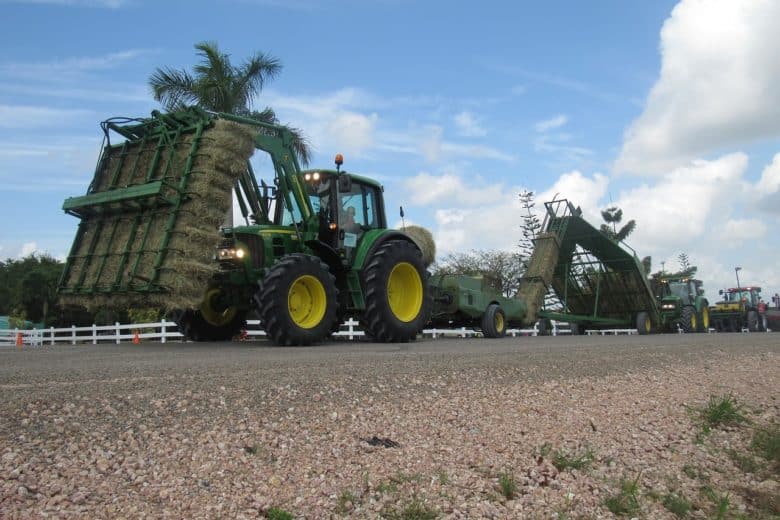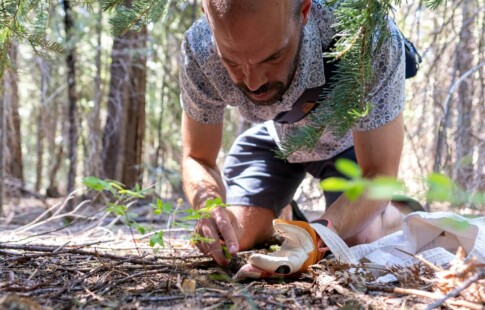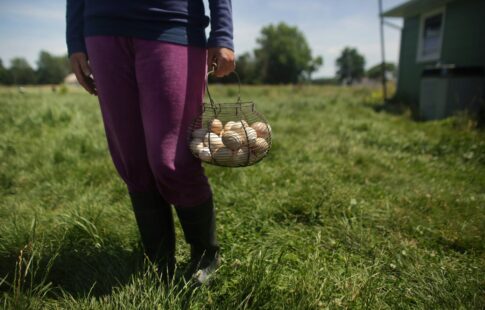
How Agricultural Transportation Can Be More Sustainable
We are reader-supported. When you buy through links on our site, we may earn affiliate commission.
Vehicles are convenient and often irreplaceable in agricultural operations. But they’re also energy-intensive and pollution-heavy despite all the good they do in streamlining processes. Many companies target food production when greening their supply chain, but not all of them focus on transportation with equal weight. Agricultural transportation doesn’t have to remain as unsustainable as it currently is, however. Cleaner options exist for shipping goods without harming our atmosphere or water sources. The incentives for widespread adaptation are plenty — companies could have better products, healthier cattle and trustworthy reputations. Eco-friendly shipping affects every part of the supply chain.
Fossil Fuel Emissions
On-the-road shipping might not be as big of a problem if vehicles didn’t have such a significant share in global warming. Trucks and cars release gasoline and diesel emissions as they travel, which pollute the air and, in some cases, cause toxic ozone. Refrigeration units and freighters are much larger than your typical car, and they output a lot more pollution.
Defining sustainable transportation often depends on the context — location and the production process. A local product may be higher in emissions than one from across the world if its overall production is more energy-intensive. If the overseas product reaches your location by boat, it may have caused less pollution compared to traveling cross-country on a freighter. Many farmers do what they can to adopt eco-friendly practices, which means they often encounter areas where compromise is unavoidable.
Alternatives to fossil fuel transport include clean diesel, EPA’s SmartWay program and electric trucks. Electric trucks are still a work in progress for many manufacturers because their size doesn’t always lend itself well to low-emission solutions. However, the truck company Freightliner plans to produce a line of electric vehicles to help reduce fuel pollution. The business Build Your Dreams already offers a fleet of electric cabs and terminal tractors that decrease noise pollution and consume less fuel.
These low-emissions vehicles could become a part of the SmartWay initiative, which helps carriers measure their carbon footprint and adjust accordingly. Participating companies establish sustainable benchmarks to help them meet goals and create improved shipping techniques. They also measure their performance against their competitors by analyzing collected data. Every business can see how their operations affect the planet in real-time — and then make changes to shrink their negative impact.
Clean diesel is an alternative to electric for transporters who aren’t able to switch to low-emission vehicles. Standard diesel contains sulfur, which contributes to soot emissions from heavy-duty automobiles, but clean diesel possesses much less of the substance. Changing its chemical makeup results in an eco-friendly fuel that works similarly — if not better than — regular diesel.
Transporting Livestock
Agricultural transportation often makes people think of vegetables and fruit, but livestock has to travel, too. Transporting live animals is a contentious issue because of animal health and comfort. Putting cattle in cramped quarters for hours on end spikes their stress levels. Increase stress leads them to go without food or water for long durations. Other issues concerning livestock transport include unloading and recovery practices. The animals should have sufficient time to regroup and relax before going back on the truck.
Many transporters and animal activists have debated whether ship transport is a better alternative for moving cattle, although this method isn’t without its issues. The problem with most shipments originates from owner neglect, as they don’t give the animals adequate nourishment. Open vessels reduce the overcrowding concerns, but constant exposure to sea wind can become uncomfortable or cause sickness, which is why many shippers use mechanical or closed carriers.
Scientists did a study at a southern Italian Control Post to analyze morbidity and mortality rates for animals traveling by truck. They found overcrowding was a frequent issue and often contributed to stress among sheep, especially lambs. They concluded that assessing the welfare of individual animals — in addition to the entire operation — is necessary to judge whether certain ones are hardy enough to make long-distance trips.
Paying closer attention to animal welfare can make transporting livestock much smoother than it currently is. Animals have limits like humans do and require food and water, as well as regular breaks. Transporters don’t always schedule in enough stops because these slow them down, but doing so would cause less livestock death and exhaustion.
Waste and Storage
Food waste often occurs when transporting food products. Products roll around and sustain bruises, and refrigerators fail in blazing temperatures. The longer the distance, the more measures companies must take to protect their shipments. Preservatives prevent spoilage, but these chemicals pose safety concerns for many consumers. Factory farming as a whole isn’t conducive to human nourishment or ecological preservation, and more people are choosing locally grown produce.
All carriers moving agricultural goods have to follow the Sanitary Transport of Human and Animal Food rule. This regulation enforces proper food handling concerning storage, vehicle cleaning between loads and refrigeration. Food safety is particularly relevant on trips where manufacturers ship edible goods alongside non-food items. A report from the Food and Agriculture Organization of the United Nations showed that transportation often proves unfavorable for fruits and tubers. These foods are prone to bruising and spoiling, and current shipment practices are lacking in ways to prevent this. Better temperature and humidity management could prevent tremendous food losses and indirectly lead to improved resource conservation.
Improving Transportation for Greener Goods
Agricultural transportation doesn’t have to keep contributing to the rise of global warming. With new shipping methods and regulations, this industry can maintain its lucrative earnings without detrimental effects. Protecting the environment ensures agriculture will remain successful for decades to come.
Share on
Like what you read? Join other Environment.co readers!
Get the latest updates on our planet by subscribing to the Environment.co newsletter!
About the author

Jane Marsh
Starting from an early age, Jane Marsh loved all animals and became a budding environmentalist. Now, Jane works as the Editor-in-Chief of Environment.co where she covers topics related to climate policy, renewable energy, the food industry, and more.





